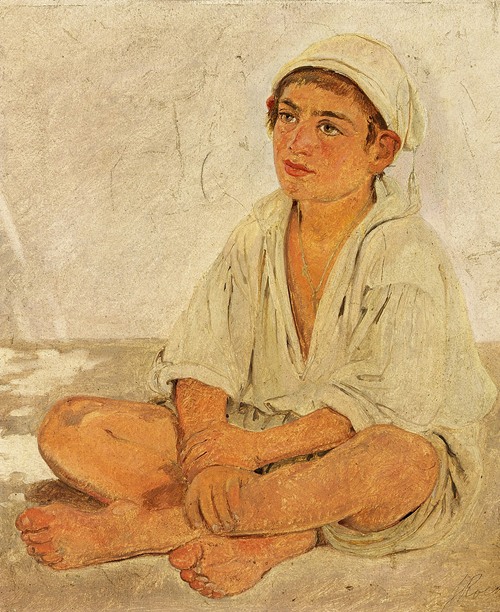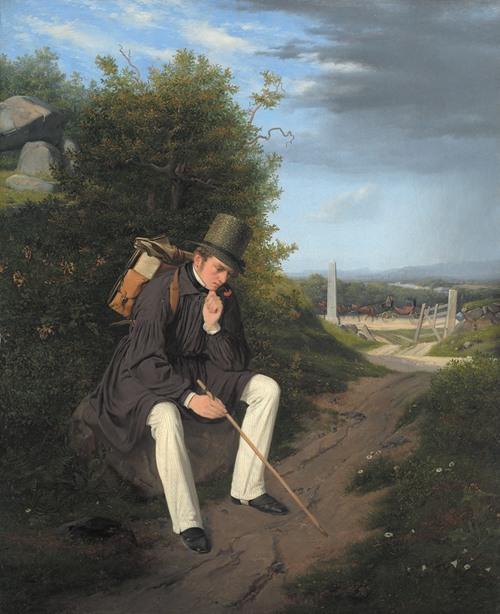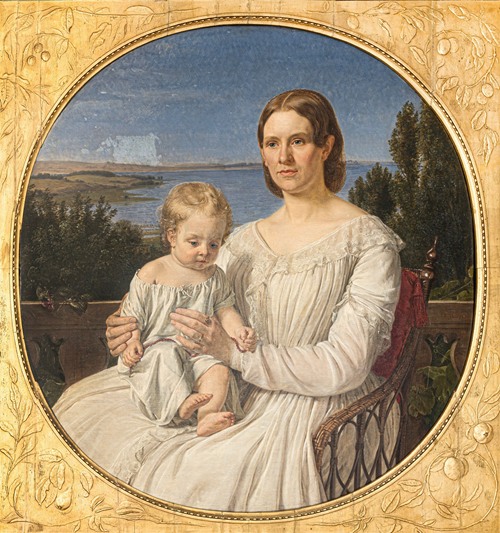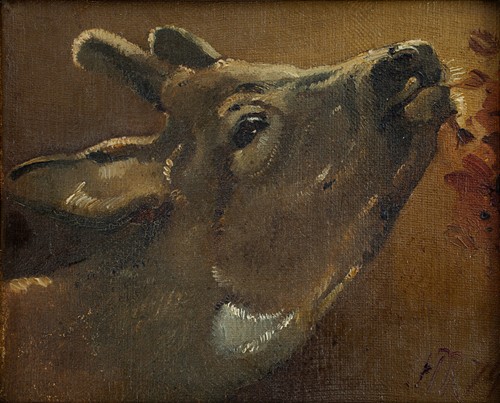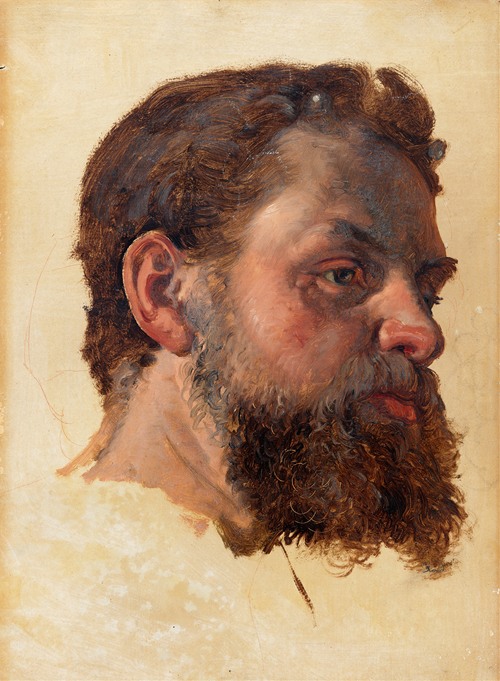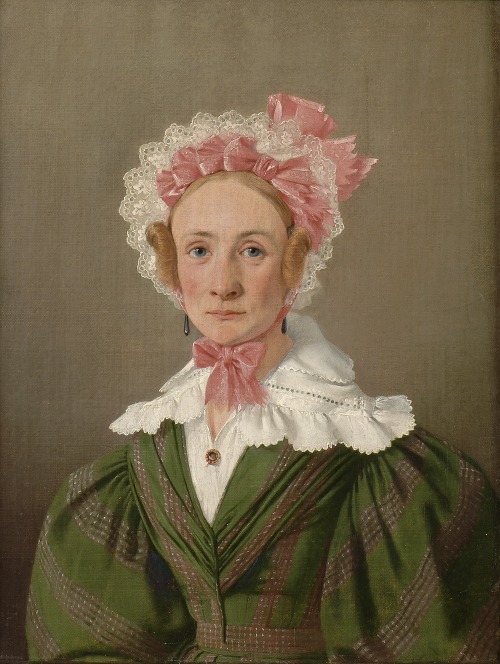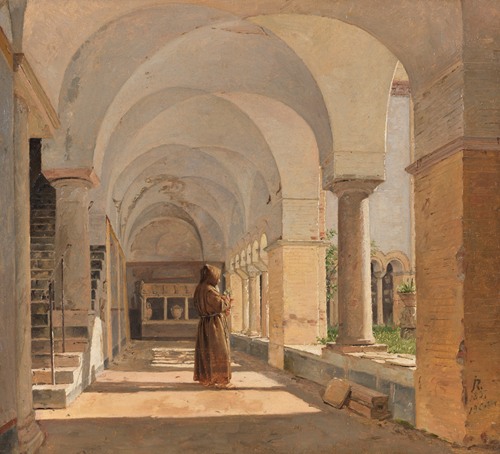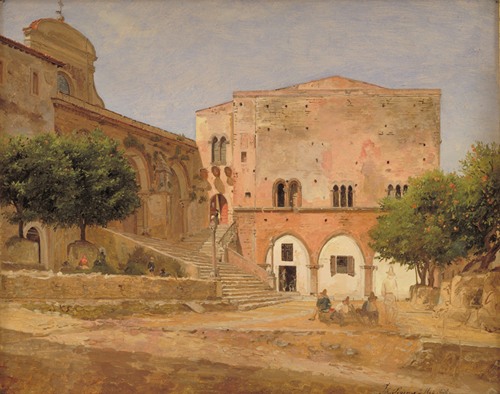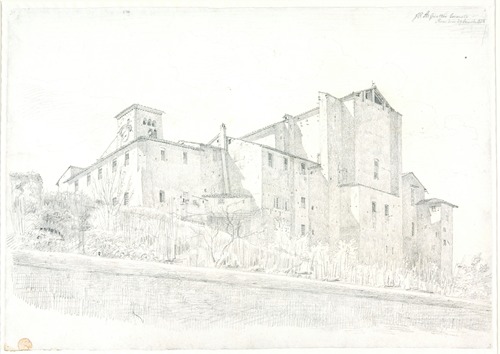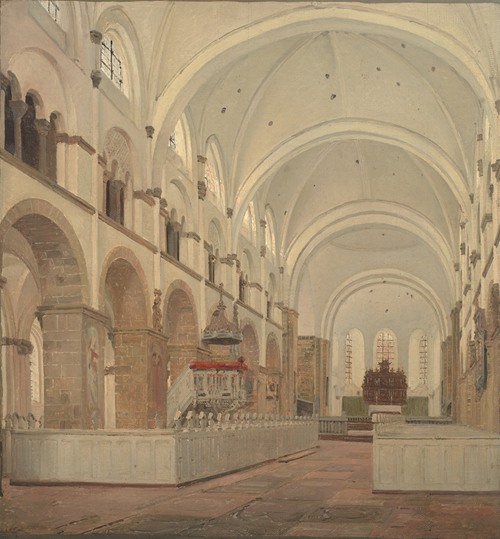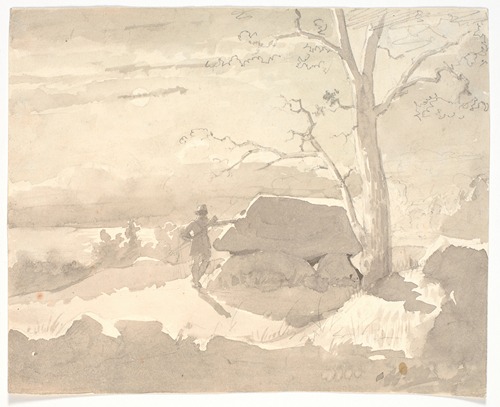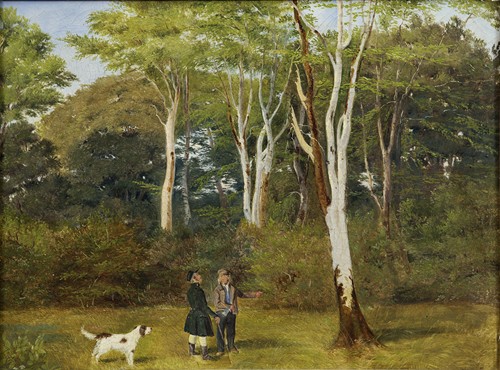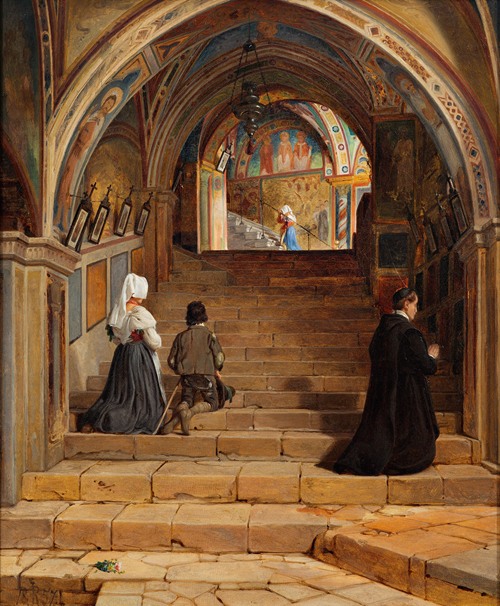

Jørgen Roed, Danish portrait and genre painter associated with the Golden Age of Danish Painting, was born in Ringsted to Peder Jørgensen Roed and wife, Ellen Hansdatter.
His father, a German immigrant, was a member of the town council, owned a farm where they raised animals and ran a distillery. He was one of five children. They were neighbors to the Vermehren family whose son, Frederik Vermehren would also become an artist, and student of Jørgen Roed.
Already while in school he had the opportunity to learn to draw and paint under schoolteacher J.J. Fyhn. Although the quality of that education was not particularly impressive, Roed’s enthusiasm was enough to inspire his parents to send him to Copenhagen in 1822 after his confirmation to train at the Royal Danish Academy of Art (Det Kongelige Danske Kunstakademi).
He was recommended to train under portraitist Hans Hansen, father of Constantin Hansen, where he studied privately, and began to paint. The most lasting result of his education under Hansen was the friendship Roed developed with Constantine, the teacher’s son. Roed’s training under Hansen was limited to making copies of other artworks, such as his first exhibited painting in 1824, an angel’s head painted after another copy based on a work by Raphael. It was first in 1826 that he exhibited an independent piece, a portrait of his first art teacher.
He had also started his training at the Academy at the same time, first in the free hand drawing school in 1822, and then in 1825 in the School of Plaster Cast Painting. He exhibited at Charlottenborg Spring Exhibition for the first time in 1824, and continued showing there regularly throughout his life.
Hansen died in 1828, and both Roed and the younger Hansen came into training under Christoffer Wilhelm Eckersberg, father of the "Golden Age of Danish Painting". Roed and Hansen were friends, and socialized much. Hansen was often a guest in the Roed’s home, and they traveled together in Denmark painting side-by-side.
In addition to many portraits he painted a number of altarpieces and religious paintings, including "Jesu Korsfæstelse" ("Crucifixion of Jesus") in 1866 for the restored church at Frederiksborg Palace.
In his later years he sculpted a portrait of his wife in marble.
His training and career began against the backdrop of an exciting time in Danish history, the transition between the authoritative monarchy and the establishment and development of democracy—the period of the Golden Age of Danish Painting as promoted by Eckersberg, and the strong sense of patriotism and nationalism exemplified by Høyen’s theories. In Roed’s later years there would be great changes in artistic sensibilities. Roed’s artistic abilities continued to be solid throughout his lifetime, although the Golden Age ideals he represented were long gone, and replaced by new creative impulses.
His academic efforts can not be underestimated as many young artists were trained under his solid and inspiring leadership during his 25 years as professor.
